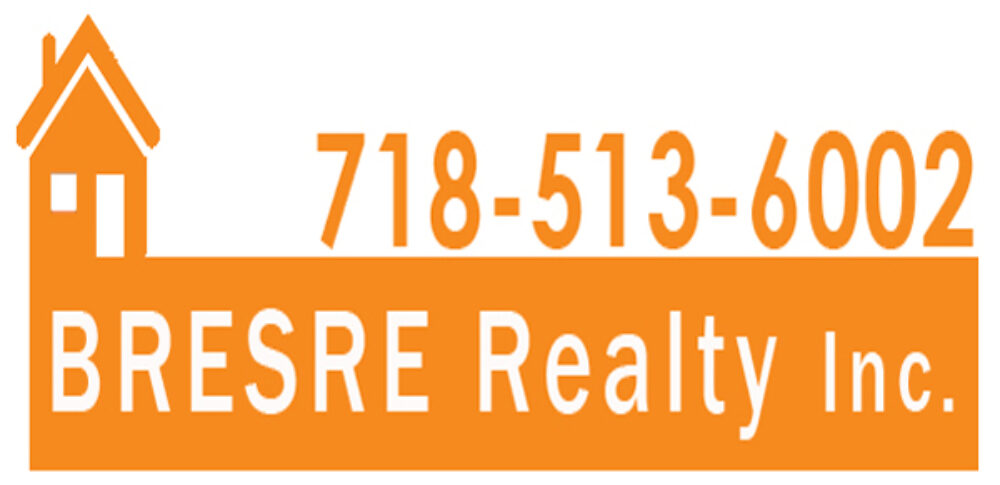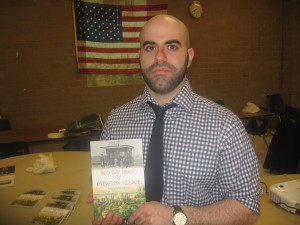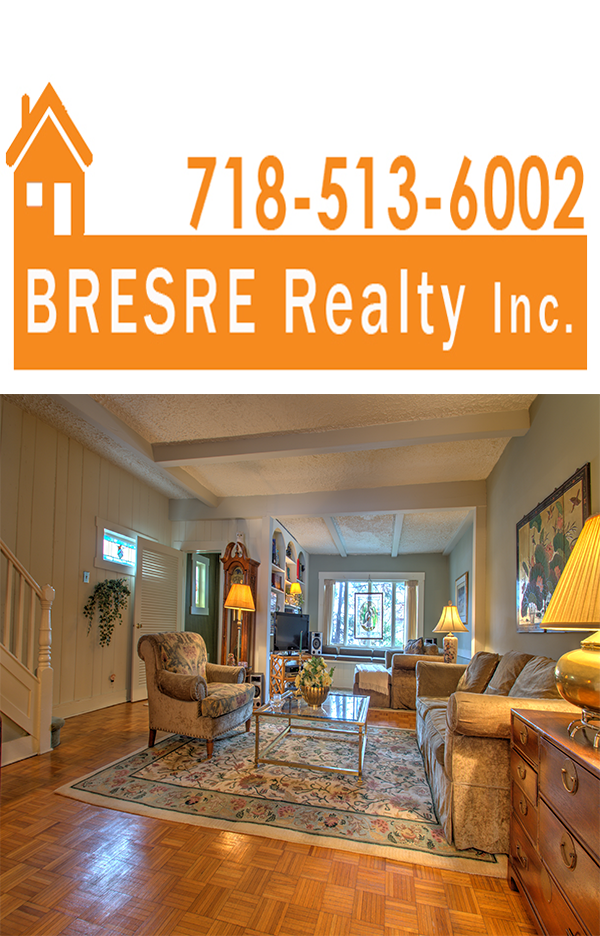‘Old Bay Ridge & Ovington Village’ Book Tells of Vibrant Community’s Residential and Business Dynamic Rise
By Harold Egeln
How Bay Ridge rose from a rural land of farms and forest to urban fame and fortune to become a fertile Brooklyn engine that drives this dynamic and thriving community of businesses and residents is excellently articulated by local historian Matthew Scarpa in his new book, with many vintage photos, “Old Bay Ridge and Ovington Village.”
His book, published by The History Press, may make readers feel like living witnesses to history and should make them understand why people settle and work there.
On March 18, Scarpa gave a presentation on his new book at a monthly meeting of Bay Ridge Historical Society, of which Scarpa is the second vice president and his grandfather Peter Scarpa is a former president, in the Shore Hill Community Room on 91st Street and Shore Road, once the site of a hospital founded in the 19th Century that became Lutheran Medical Center in Sunset Park.
“Between the years 1850 and 1915, great change occurred in By Ridge,” he wrote. “This was a crucial period in Bay Ridge’s historic past and bridges two distinct chapters in the course of its history: its ‘ancient past’ and its present.” Real estate, in this still continuing vibrant venture, boomed as, he wrote, “By the 1920’s, much of Bay Ridge’s past began to dwindle.”
Among factors of Bay Ridge’s early boom years almost a century ago, Scarpa noted, was the start of trolley service in 1891, the Fourth Avenue subway line’s extension in 1916 to Fourth Avenue and 86th Street and a few years later to 95th Street, Brooklyn’s industrialization and urbanization, and, above all, the influence of Ovington Village. It was established as an artists’ community in 1850 in what was then the Township of New Utrecht, along and around Ovington Avenue.
Ovington Village’s founding 165 years ago, wrote Scarpa, ”sowed the seeds for the development of a greater community. As a result of its establishment, the village’s surrounding area gradually increased and expanded, becoming more populated and developed.” The wider community around it was officially named Bay Ridge in 1853 in place of its old name Yellow Hook.
Among the influences was the building of two community and social enters in Ovington Village, the Bay Ridge Antheneum in 1871, with its Great Hall and the community’s first public library, on Second Avenue (Ridge Boulevard) between Bay Ridge and Ovington Avenues, and the Ridge Club of Bay Rudge, an athletic and social institution, on Second Avenue between 71st and 72nd Streets in 1894.
The Bay Ridge Theater, on Third Avenue and 71st Street, opened in 1915, and was called “the most palatial amusement building in New York,” and served Bay Ridge until it closed in the 1960’s.
Among prominent nationally-known residents of Ovington Village were Otto Heinigke, a stain-glass manufacturer and artist, and George Schlegel, a lithographer and horticulturalist. They, Scarpa said, “left indelible marks on New York and American art history,” and “made a significant impact on how art was viewed and displayed” in the late 19th and early 20th centuries.
One of the most impactful residents was historian, lawyer and statesman Henry Murphy (1810-72), among prominent citizens who laid the groundwork for Bay Ridge’s growth, Scarpa noted. He was a founding editor of the “Brooklyn Daily Eagle” newspaper in 1841, was elected City of Brooklyn mayor in 1842, and after that a state senator and then a U.S. representative. He was a Democrat.
Photographer Samuel W. Thomas, who lived on 75th Street (Bay Ridge Parkway) took hundreds of photos of Bay Ridge during its transition years, and are now in the photo trove of the Bay Ridge Historical Society.
During his time in the late 19th Century and early 20th, Bay Ridge hosted several mansions, including one on a hilltop that would become Owls Head Park, and places such as the Crescent Athletic Club, on Shore Road and 83rd Street, which closed in 1931 and moved to Huntington, Long Island.
Bay Ridge is not known for its brownstones, such as Brooklyn Heights and Park Slope, but the few it has are remarkable, Scarpa stated. “The (20) brownstone houses on Senator Street between Third and Fourth Avenues are the only stretch of brownstone homes other than those on Ovington Avenue between Ridge Boulevard and Third Avenue.” They were listed on the National Register of Historic Places in 2007, which happened when the street’s block association worked for that goal.


